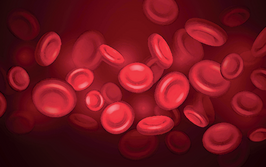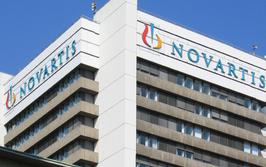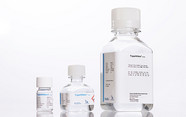Drugs to Watch in 2025: Part 1
We speak with Clarivate about their report listing eleven key drugs to watch in 2025
Stephanie Vine | | 8 min read | Interview

Clarivate has published its annual Drugs to Watch Report. Eleven drugs have been selected based on factors such as expected approval, clinical trial results, competitive landscape, market dynamics, and expected sales. The 100-page report is free to access online and includes commentary on other industry trends.
We wanted to know more about the report – including how it’s put together and how the drug modalities compare with those on previous iterations of the list. We spoke with Mike Ward, Global Head of Life Sciences & Healthcare Thought Leadership at Clarivate, to find out more. In Part 1 of this interview, we dive into the report and how it was created.
Ward has been writing about and analyzing the life sciences industry for more than 35 years. We also spoke with him about deeper industry trends, including AI, real-world data, and cost pressures. You can read more in Part 2 of this interview.
Eleven Drugs to Watch in 2025
- AWIQLI (insulin icodec) for type 1 and type 2 diabetes) – Novo Nordisk
- CagriSema (cagrilintide + semaglutide) for obesity and type 2 diabetes – Novo Nordisk
- COBENFY (KarXT; xanomeline-trospium) for schizophrenia – Karuna Therapeutics (acquired by BMS)
- EBGLYSS (lebrikizumab) for atopic dermatitis – Eli Lilly & Almirall
- Fitusiran for hemophilia A and B – Alnylam Pharmaceuticals & Sanofi
- GSK-3536819 for meningococcal disease – GSK
- IMDELLTRA (tarlatamab-dlle) for small cell lung cancer – Amgen
- mRESVIA (mRNA-1345) for RSV immunization – Moderna
- SEL-212 for gout – Sobi, Cartesian Therapeutics/Selecta Biosciences
- Vepdegestrant (ARV-471) for breast cancer – Arvinas and Pfizer
- Zanzalintinib (XL092) for renal cell carcinoma, colorectal cancer, and squamous cell carcinoma of the head and neck – Exelis

What’s involved in putting a report like this together?
It’s a long process. We started to produce the 2025 report in June 2024. We begin by reaching out to our analysts – over 160 of them – who cover hundreds of diseases, drugs, and markets. They bring their expertise in their respective areas, but they also draw upon a wealth of integrated datasets that span the entire R&D and commercialization lifecycle. We asked them to nominate molecules or drugs that they believe should be on the radar for the report.
Once the nominations are in, our analysts manually evaluate each drug, considering factors such as expected approval or launch dates, the competitive landscape, regulatory status, trial results (both reported and anticipated), market dynamics, unmet needs, and other key indicators.
We also incorporate insights from clinicians who are actually treating patients. Quite often, existing treatments are suboptimal and doctors are looking for something better. We ask them questions such as: what are you using at the moment? What would an ideal medicine look like?
Beyond identifying potential disruptors, we also ask analysts to highlight the hurdles their nominated drugs still need to overcome to be successful. Typically, we look for drugs that we believe will achieve blockbuster status – meaning annual sales of $1 billion or more – within five years. A few years ago, we broadened our definition to also include drugs that might not reach blockbuster sales but could still be therapeutic game changers. This is particularly relevant in the rare disease space, where the market size might be smaller, but the impact on patients can be enormous.
To qualify for the report, a drug also needs to be in phase II or phase III trials, at the pre-registration or registration stage, or be recently approved. The initial list for the Drugs to Watch 2025 report included 26 candidates. We then refined that selection, filtering for drugs expected to surpass $1 billion in annual sales by 2030 or those with the potential to significantly reshape treatment paradigms. That’s how we arrived at the 11 drugs featured in the final report.
How challenging was it to whittle the list down to 11 drugs? Were there any disagreements about what should be included?
You might expect there to be some disagreements, but the process is quite structured and we can’t include everything. Even with just 11 drugs, the report runs over 100 pages, and we also translate it into Korean, Japanese, Chinese, and Latin American languages.
We ranked the 26 shortlisted drugs, providing a rationale for each selection and its position. The ranked list then went back to the analysts, and we ask for their feedback.
Originally, we had 12 drugs on the 2025 list, but in October, our number 12 pick was dropped because the company announced that its pivotal readout had been pushed to 2026, delaying its potential market impact. Given that, we decided to set it aside as a possible drug to watch for the 2026 report instead.
Throughout this process, the analysts can challenge the rankings. If someone feels strongly that a drug should be included or prioritized differently, they can lobby for it. For 2025, however, everyone was happy with the final selection. I think that’s largely because we involve people early on, so they feel like they’ve had their say.
How does the 2025 list compare with the lists from previous years? What trends and shifts are you seeing?
Cancer treatments remain a major focus. This has been a consistent trend in recent years, and it’s likely to continue.
One notable shift we’ve seen is the growing emphasis on rare disease treatments. For example, over half of the drugs approved by the FDA during 2024 had orphan drug designation. Some of these rare disease therapies won’t necessarily achieve billion-dollar sales, but they’re still hugely important because they address significant unmet medical needs.
Another area where we’ve seen a lot of movement is neurology. Whether in neuropsychiatry or neurodegeneration, there have been some major approvals in this space, including Alzheimer’s drugs that we’ve highlighted as drugs to watch in previous years. A great example from this year’s list is COBENFY – the first schizophrenia drug to target muscarinic pathways (M1/M4) rather than dopamine. Originally developed by Karuna, it was acquired by Bristol Myers Squibb in a $14 billion deal announced in 2023, which was completed in 2024. The drug secured FDA approval in November, marking a significant change in how schizophrenia is treated. For a long time, big pharma has been stepping away from neuroscience, but we’re now seeing renewed investment. Advances in our understanding of neurological diseases are breathing new life into the field, and that’s reflected in both drug development and regulatory approvals.
Beyond that, we’re continuing to see momentum in gene and cell therapies, RNA-based therapies, and bispecific antibodies. These emerging therapeutic classes are having a real impact. Take RNA-based treatments, for instance; 2024 saw nine approvals in this space, which is a sharp uptick compared to previous years.
Another big industry trend is the increasing use of expedited regulatory pathways, such as fast track, breakthrough therapy designation, priority review, and accelerated approval. Nearly two-thirds of new therapies are now getting approved via one of these mechanisms.
In addition, over the past three to four years, nearly half of the drugs approved by the FDA have come from biotech companies. Even when big pharma is submitting the applications, about half of those drugs originally came from biotech labs, which speaks to the cutting-edge nature of the sector. Big pharma is still critical, but a lot of their pipeline now comes from biotech acquisitions and partnerships. A great example of this trend is AstraZeneca and Daiichi Sankyo’s collaboration on antibody-drug conjugates (ADCs), such as datopotamab deruxtecan. Drugs aren’t being developed solely within the walls of big pharma and there’s a growing reliance on external innovation.
Another major trend is the shift toward precision medicine. More and more drugs are being developed to target specific genetic or molecular profiles, which is something we’ve long seen in oncology but is now expanding into other disease areas as well. Interestingly, small molecules are still playing a big role too. Despite speculation that biologics would push small molecules into the background, they still account for around two-thirds of approvals.
Ultimately, the drugs that stand out – and the ones we feature in the report – are those that are truly innovative. First-in-class therapies are a major focus for the industry, and we’re seeing strong investment in breakthrough mechanisms of action.
To summarise, oncology remains dominant, there’s a growing emphasis on rare disease treatments, neurology is resurging, gene and cell therapies continue to gain traction, and precision medicine is expanding. We’re also seeing cardiovascular and metabolic diseases, particularly GLP-1-based treatments, coming into the spotlight in a big way.
GLP-1s are a hot topic. Did people see this explosion of interest coming?
If you go back six years or so, GLP-1s weren’t a major focus. In fact, some companies, like Pfizer, deprioritized their GLP-1 programs.
Right now, neither Eli Lilly nor Novo Nordisk are in the top 10 pharma companies by revenue, but this will change by 2030. You can see how the market is already anticipating this; Eli Lilly is now the most valuable pharmaceutical company in the world by market capitalization, and Novo Nordisk is the largest European pharma company by the same measure. These two companies are expected to dominate in the coming years.
GLP-1s were originally developed for type 2 diabetes, but their success in obesity treatment has been a game-changer. Semaglutide (Wegovy) was approved for obesity as early as 2021 and has shown strong weight-loss results in clinical trials. Tirzepatide (Mounjaro/Zepbound) has been even more impressive in obesity trials. That said, these drugs aren’t perfect. There are still challenges; side effects, including gastrointestinal issues, can be unpleasant, and patient dropout rates are high. There are also concerns about muscle mass loss alongside weight reduction. The fact that they are all injectables can also be a barrier for some patients.
That’s why companies are working on next-generation GLP-1s, such as combination therapies or oral versions that could reduce side effects, preserve muscle mass, and improve tolerability. There’s huge scope for improvement, which is where a lot of the focus is shifting.
The emerging potential of GLP-1s beyond diabetes and obesity is also catching attention, such as cardiovascular benefits. Semaglutide has been shown to reduce cardiovascular events by about 20 percent in patients with existing cardiovascular disease. There’s also early research suggesting potential applications in neurodegenerative conditions, such as Alzheimer’s and Parkinson’s. There is a lot of room for further exploration.
Biotech companies developing next-generation GLP-1s are also seeing a surge in interest. Companies that had previously struggled to book meetings with pharma companies are now being chased.
While the potential of GLP-1s in diabetes was recognized early, few people anticipated just how quickly they would take off in obesity and what the broader applications would be.
Check out Part 2, where Ward discusses the challenges of bringing a new drug to market, the evolution of therapies targeting genetic diseases, pricing pressures, and more.

Making great scientific magazines isn’t just about delivering knowledge and high quality content; it’s also about packaging these in the right words to ensure that someone is truly inspired by a topic. My passion is ensuring that our authors’ expertise is presented as a seamless and enjoyable reading experience, whether in print, in digital or on social media. I’ve spent fourteen years writing and editing features for scientific and manufacturing publications, and in making this content engaging and accessible without sacrificing its scientific integrity. There is nothing better than a magazine with great content that feels great to read.



















